The Daisy flowers are known for their lustrous beauty. Daisies can make your garden look bright with their stunning white blooms throughout spring and summer. If you think of pairing your daisies with other flowering plants, it is a great idea to make your garden look more beautiful.
The daisies should be accompanied by plants that can complement their blooms and their shape and size. Since daisies are white with yellow centers and appear bright and shiny, pairing them with other flowering plants with different shades of color will add more vibrance to your garden.
Let us understand the plants that can be planted along with daisies and accompany them to have a stunning summer-blooming garden.
Companions for daisies
Some popular companion plants for daisies include:
- Liatris
- Bellflower
- Petunia
- Garden gladiolus
- Lupine
- Crocosmia
- Hydrangea
Below we have discussed all 7 plants detail that can go along with daisies wonderfully and have similar needs and will also enhance the beauty of your garden by complementing your daisies with their bright colors.
Blazing star or Liatris
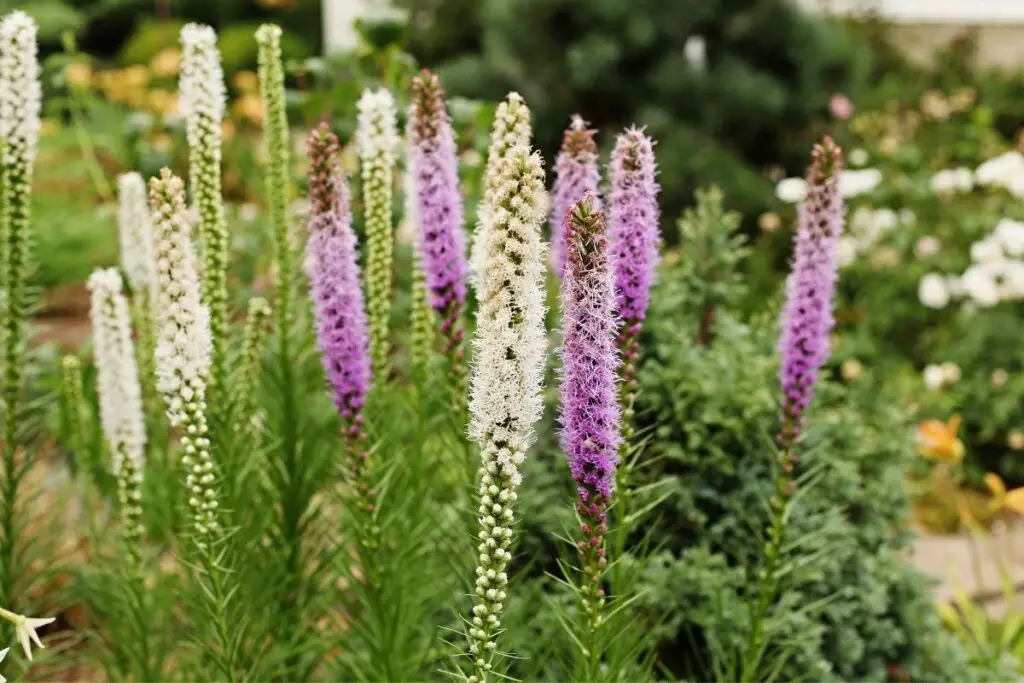
The Blazing star (Liatris spicata) are plants that have flowers with purple, white, lavender, and sometimes bluish color and can add some beauty to your white daisies while around them.
They also like full sun and light shade in scorching climates, just like daisies do. They prefer well-draining soil, which is nutrient-rich. They bloom during the summer months along with daisies.
It is best to grow them behind the daisies or on the sides, as it grows up to four feet tall and 1.5 feet wide, making them ideal for growing along with daisies.
Just like daisies, they are also perennial bulbs, and you can plant them in the spring season for their summer blooms.
This perennial plant with bluish-purple blooms can complement your daisies wonderfully and will add to the vibrant appearance of your garden in the blooming season.
The blazing star will need similar care and nutrition as the daisies, and you will not have to put extra effort into their nutrition.
Therefore, Liatris should be a definite choice if you’re thinking of planting other flowering plants with your daisies.
Looking for gardening supplies? We have tested 100's of products before recommending them to you guys. Check out our best pick below:
| Image | Gardening Supplies | Best Price? |
|---|---|---|
 Top
Top Top
Top | Raised Garden Bed Kit | Check On Amazon |
 | XLUX Soil Moisture Meter, Plant Water Monitor, Soil Hygrometer Sensor for Gardening, Farming, Indoor and Outdoor Plants, No Batteries Required | No Results |
 Top
Top Top
Top | 82 Pcs Garden Tools Set and Extra Succulent Tools Set | Check On Amazon |
 | Joeys Garden Expandable Garden Hose with 8 Function Hose Nozzle, Lightweight Anti-Kink Flexible Garden Hoses, Extra Strength Fabric with Double Latex Core, (50 FT, Black) | No Results |
 Top
Top Top
Top | Dual Chamber Compost Tumbler | Check On Amazon |
 Top
Top Top
Top | Sunnyglade Plant Stakes | Check On Amazon |
 Top
Top Top
Top | Organic Cold Pressed Neem Seed Oil | Check On Amazon |
 Top
Top Top
Top | Mighty Mint Gallon :-Insect and Pest Control Peppermint Oil | Check On Amazon |
 Top
Top Top
Top | Scotts DiseaseEx Lawn Fungicide | Check On Amazon |
 Top
Top Top
Top | Jacks Classic 20-20-20 All Purpose Fertilizer | Check On Amazon |
 Top
Top Top
Top | 30,000 Seeds Pollinator Attracting Wildflower Mixture | Check On Amazon |
 Top
Top Top
Top | Survival Vegetable Seeds Garden Kit-Over 16,000 Seeds | Check On Amazon |
Bellflower or Campanula
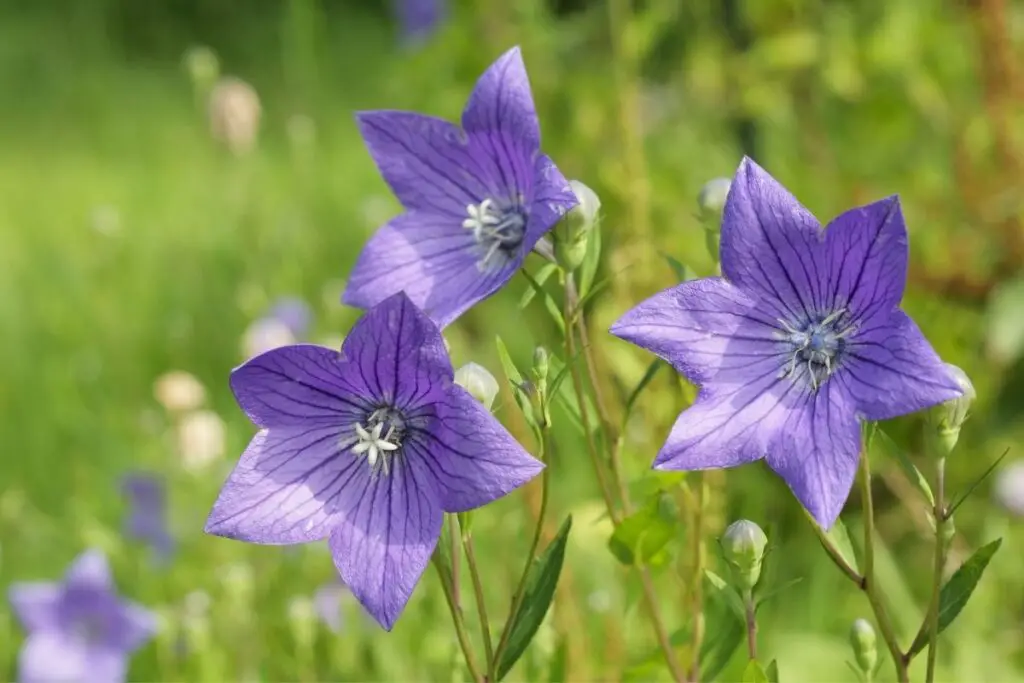
The Bellflower (Campanula sp.) are plants with light blue or light purple flowers. It can also accompany daisies in your garden and make your garden look beautiful.
These are also perennial plants and blooms from mid-spring to fall all the way. The time of its blooming depends on what particular species you have planted in your garden.
The bellflowers are also sun-loving like daisies and will need full sun, and sometimes they require shade in scorching conditions.
The kind of soil bellflowers require is well-draining and nutrient-rich. They thrive well in similar conditions in which the daisies thrive under full sun.
These plants can quickly grow from 1 to 6 feet tall. It is best to plant them on the side of your daisies or in front to give your garden a beautiful look.
You can plant the seeds of the bellflower plant during the spring, and when it has grown fully, you can transplant the larger plants in the winters.
The bellflowers will need similar nutrition and care like daisies, so no extra effort is required to prepare the soil and maintain a different watering schedule as You can take care of them along with daisies in the same way.
Therefore, these plants are an excellent choice for you to have with daisies which will provide your garden beautiful and contrasting look and compliment your daisies during the flowering season.
Petunia
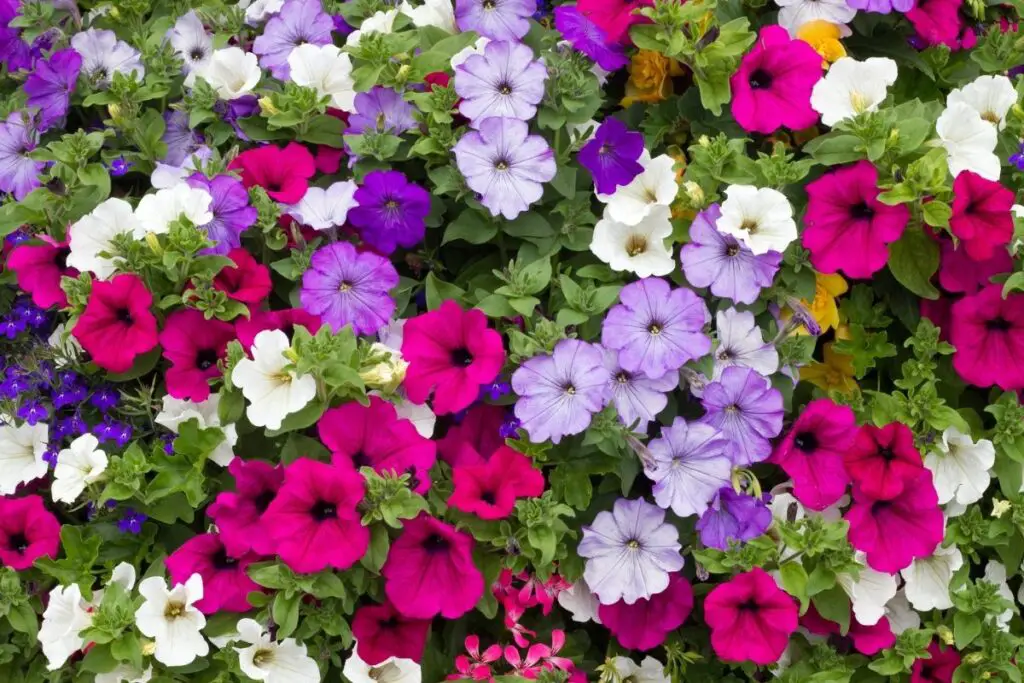
The petunias (Petunia sp.) are small flowering plants, and their flowers come in various shades like yellow, white, cream, blue, red, purple, pink, etc.
The petunias flower from mid-spring till the end of summer. You can plant these in the spring season so that the blooms can come up after that.
Like daisies, petunias also require well-draining soil and thrive under similar conditions in which the daisies thrive. These are small plants and can grow up to two feet only and spread from 1 foot 24 feet width.
Since these plants are smaller than daisies, it is best to plant them in front of the daisies so that the vibrant colors of their flowers can enhance the look of your garden.
Like daisies, these are also perennials but, in some climates, they also grow annually.
The petunias are not challenging to take care of along with daisies, and therefore they become a specific choice to plant with the daisies. They will definitely make your garden look beautiful, with different vibrant colors complementing the white daisies wonderfully.
Garden Gladiolus
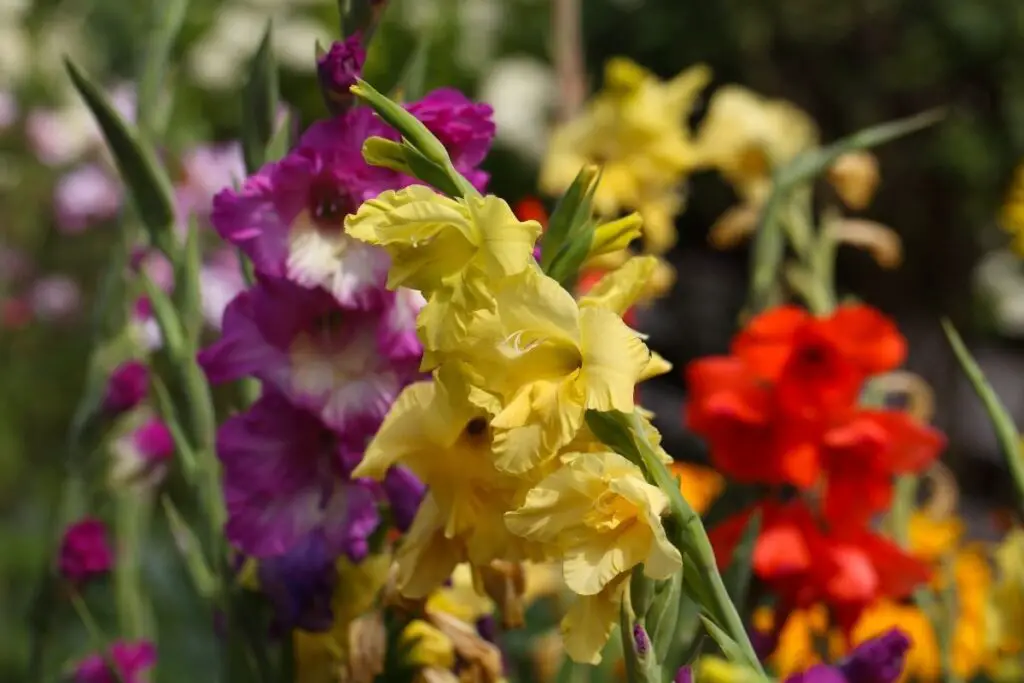
The garden Gladiolus (G.hybrids) are flowering plants that like to grow under the full sun, just like daisies, and can go between 3 to 6 feet tall.
They start to blossom between late spring to the end of summer. Its flowers come in various colors like white, lavender, yellow, orange, salmon, apricot, purple, Smokey, and red. Some flowers are even green in color.
These plants also prefer well-draining soil, which is nutrient-rich and thrive in the same conditions where the daisies thrive.
Since they can become taller than daisies, it is best to grow them behind the daisies so that the light for daisies will not be obstructed, and they will look beautiful along with the garden Gladiolus.
They bear flowers in the late spring and accompany the white daisies gracefully. So if you implant the Gladiolus around your daisies, they will certainly make your garden look bright and beautiful and also add to the daisy’s beauty.
Lupine
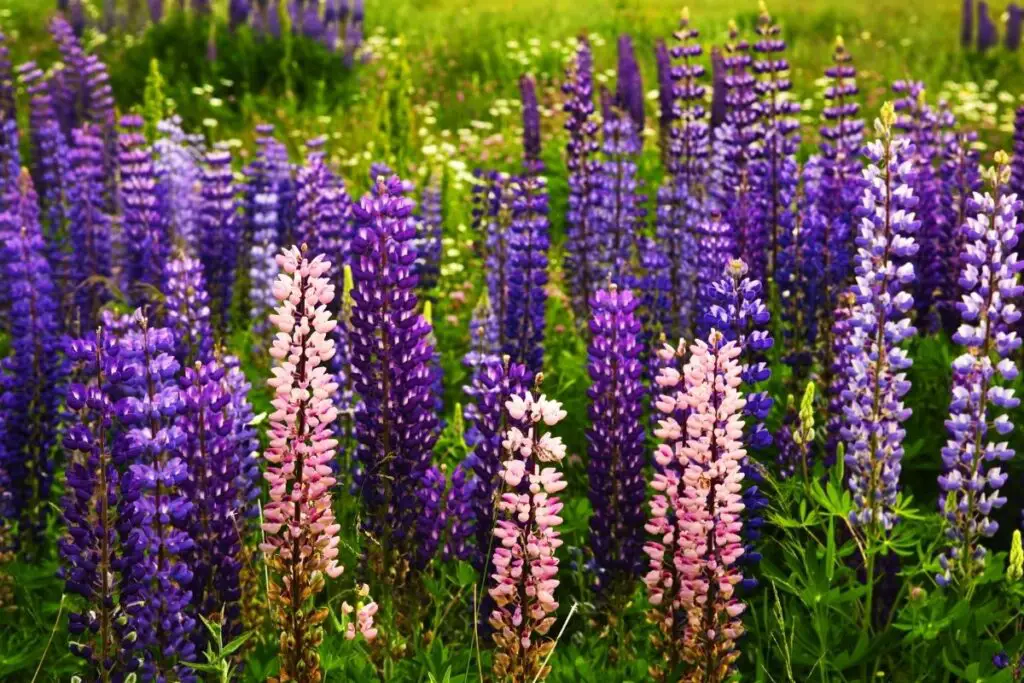
The lupines (Lupinus polyphyllus) are perennial plants with red-purple and blue flowers and look exceptionally beautiful.
These plants are also sun-loving, and they flower from late spring to late Midsummer with beautiful blooms.
They also prefer nutrient-rich, well-draining soil, so you don’t need to overthink about what kind of soil mix you need to use for this plant, and you can easily plant them with your daisies.
Since the lupine grows up to four feet tall and spreads between 2 to 2.5 feet wide, it is best to plant them on the side or behind your daisies.
You can sow their seeds in fall or early spring. You can also transplant them during the spring season to have beautiful blooms in the summer.
These plants will require similar care and similar nutritional requirement, Like the daisies. Therefore they are a good choice if you are thinking about accompanying your daisies with another flowering plant.
The lupine will undoubtedly go along well with your daisies to make your garden stunning. Therefore, you should try planting these along with your daisies to befriend them.
Montbretia or Crocosmia
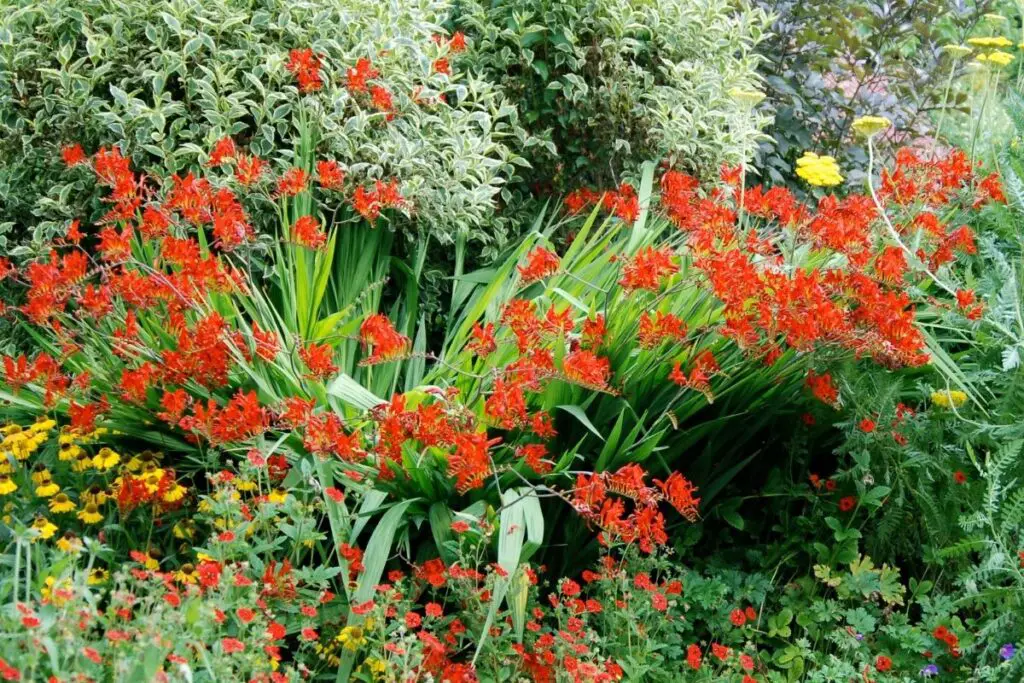
The Crocosmias (C. tritonia or C. x crocosmiiflora) are plants that also love to stay under the sun all day and flower from the summer season until winter.
Crocosmia needs nutrient-rich, well-draining soil, and they thrive in similar conditions in which the daisies thrive. So, no additional care is required for these plants as well, along with daisies.
Their flower comes in shades of orange-yellow and red, and they look exceptionally beautiful when paired with daisies.
Don’t forget that these plants also grow up to four feet tall, so you will need to plant them behind or beside the daisies but not in front of them.
The plant seeds in the winter for subsequent spring grows and flowers during the summer season. So it would be best if you indeed considered these plants for pairing with your daisies so that your garden will look full of colors during the flowering season.
Hydrangea or Bigleaf
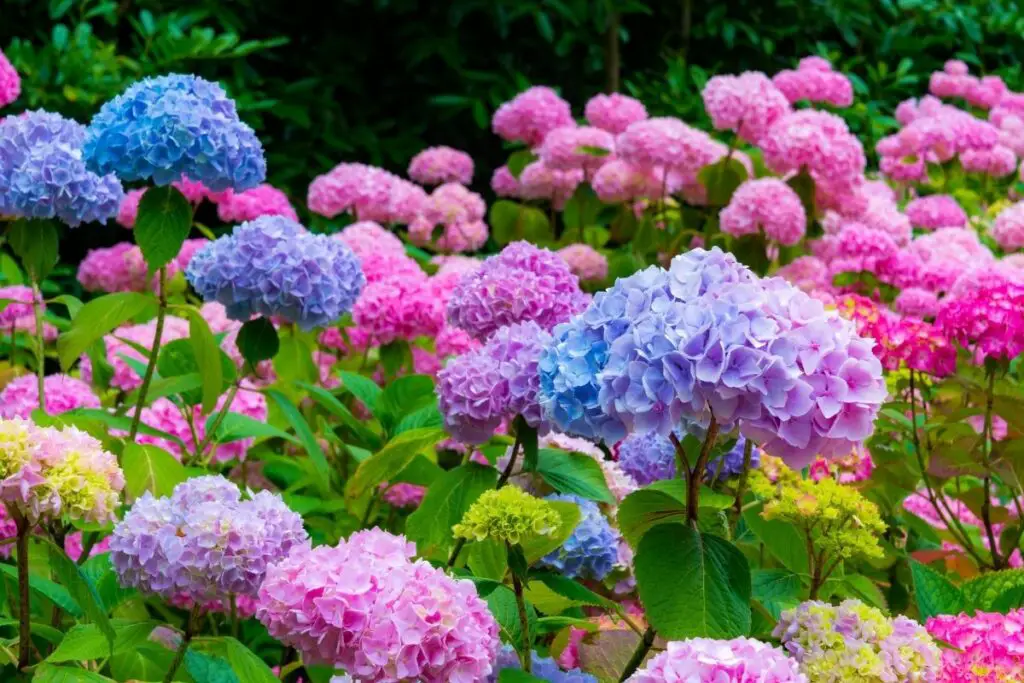
The hydrangea (H. macrophylla) are plants that come with blue, red, pink, or white flowers (color can vary with the soil’s acidity).
They are also sun-loving plants, but in hot climates, they will need some shared during the hot summer afternoons.
The plant starts blooming from the summer season and continues to bloom till fall. These are comparatively bigger plants than daisies and can grow up to 8 feet wide and high and therefore, it is advised to plant them behind your daisies.
These plants are deciduous perennials, which means they lose all their leaves at one time, possibly in winters. You can plant these in the winter season, but if you’re planning to plant them in the spring season, then you need to take care of its watering schedule.
If paired with daisies, the hydrangea can enhance the look of your garden on the floor in season, and it can undoubtedly become eye-catching. So, it is worth accompanying your daisies with hydrangea as they can complement your daisies wonderfully.
Final words
- All the plants, as mentioned earlier, will need common care along with daisies. It means you will not have to spend extra labor or time thinking about the nutrition of these companion plants.
- There are many more plants apart from the seven plants mentioned earlier which can go along with daisies; therefore, your daisies will never get lonely, and they will always have colorful companions.
Ref: Wikipedia, Britannica, University Of Florida, Ucanr.edu
